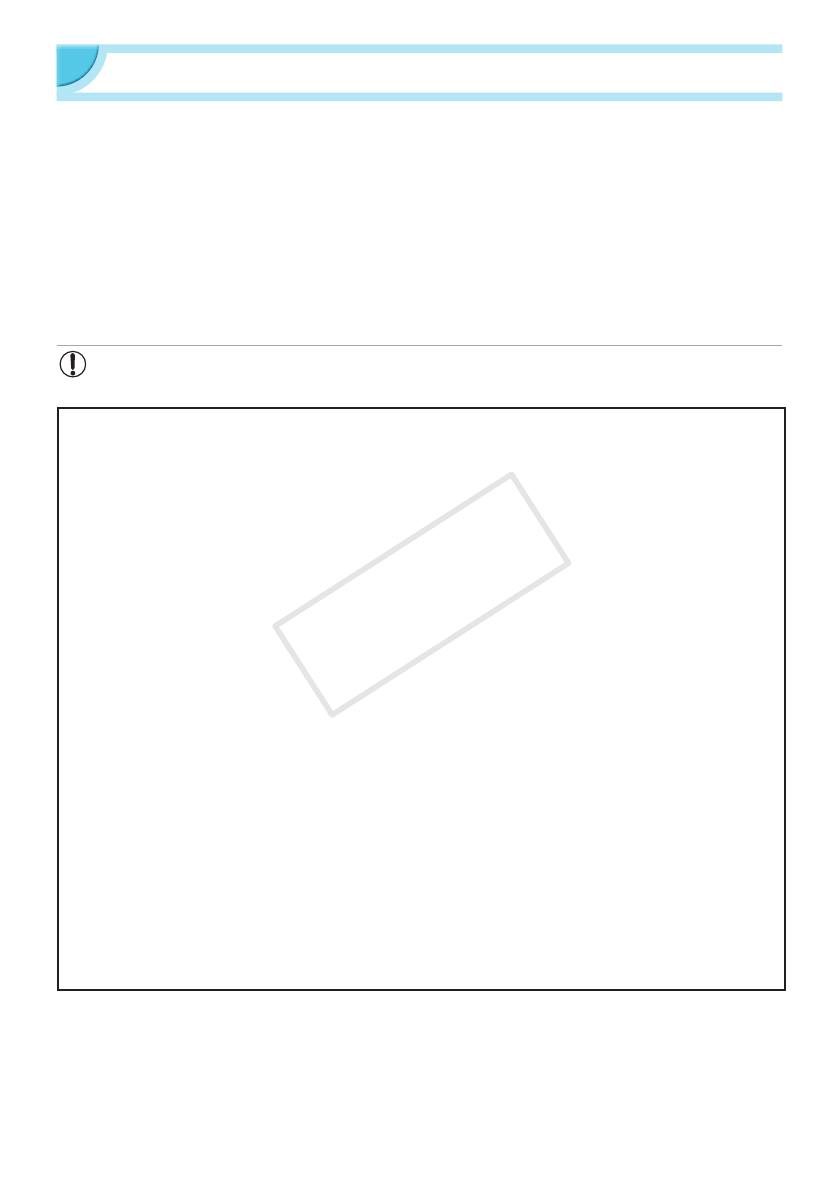
54
Handling SELPHY
O Do not apply strong force or vibration. This may cause paper jams or the printer to malfunction.
O Do not expose SELPHY to insect sprays and volatile liquids. Do not allow SELPHY to be in contact with
rubber or plastic products over a long time. This may deteriorate the external casing.
O Depending on the room temperature, SELPHY may overheat and temporarily stop operating. This is not
a malfunction. Wait for a while untill SELPHY cools down and restarts operating. Printing may take longer
when continuously printing, the room temperature is high, or SELPHY’s rear air vent (p. 6) is blocked
because SELPHY will temporarily stop printing due to overheating.
O When moving SELPHY from a cold place to a warm place, insert SELPHY in an airtight plastic bag
in advance and remove after SELPHY has reached room temperature to avoid condensation. If
condensation forms, leave SELPHY in room temperature until the condensation evaporates naturally.
O Clean SELPHY with a soft dry cloth.
O If dust accumulates on the air vent (p. 6), remove the ink cassette (p. 14) and clean away the dust. The
printing results may not be clean if dust gets in from the air vent.
O Never clean SELPHY with solvents such as benzine or thinner, or mild detergent. This may
deteriorate or deform the external casing, or the coating may peel off.
FCC Notice
(Printer, Models CD1100 and CD1107 Systems)
This device complies with part 15 of the FCC Rules. Operation is subject to the following two conditions:
(1) This device may not cause harmful interference, and
(2) this device must accept any interference received, including interference that may cause undesired operation.
NOTE: This equipment has been tested and found to comply with the limits for a Class B digital device, pursuant
to part 15 of the FCC Rules. These limits are designed to provide reasonable protection against harmful
interference in a residential installation.
This equipment generates, uses and can radiate radio frequency energy and, if not installed and used in
accordance with the instructions, may cause harmful interference to radio communications. However, there is
no guarantee that interference will not occur in a particular installation. If this equipment does cause harmful
interference to radio or television reception, which can be determined by turning the equipment off and on, the
user is encouraged to try to correct the interference by one or more of the following measures:
• Reorient or relocate the receiving antenna.
• Increase the separation between the equipment and receiver.
• Connect the equipment into an outlet on a circuit different from that to which the receiver is connected.
• Consult the dealer or an experienced radio/TV technician for help.
The cable with the ferrite core provided with the printer must be used with this equipment in order to comply with
Class B limits in Subpart B of Part 15 of the FCC rules.
Do not make any changes or modications to the equipment unless otherwise specied in the manual. If such
changes or modications should be made, you could be required to stop operation of the equipment.
Canon U.S.A., Inc.
One Canon Plaza, Lake Success, NY 11042, U.S.A.
Tel No. (516) 328-5600
Canadian Radio Interference Regulations
This Class B digital apparatus complies with Canadian ICES-003.
COPY


















